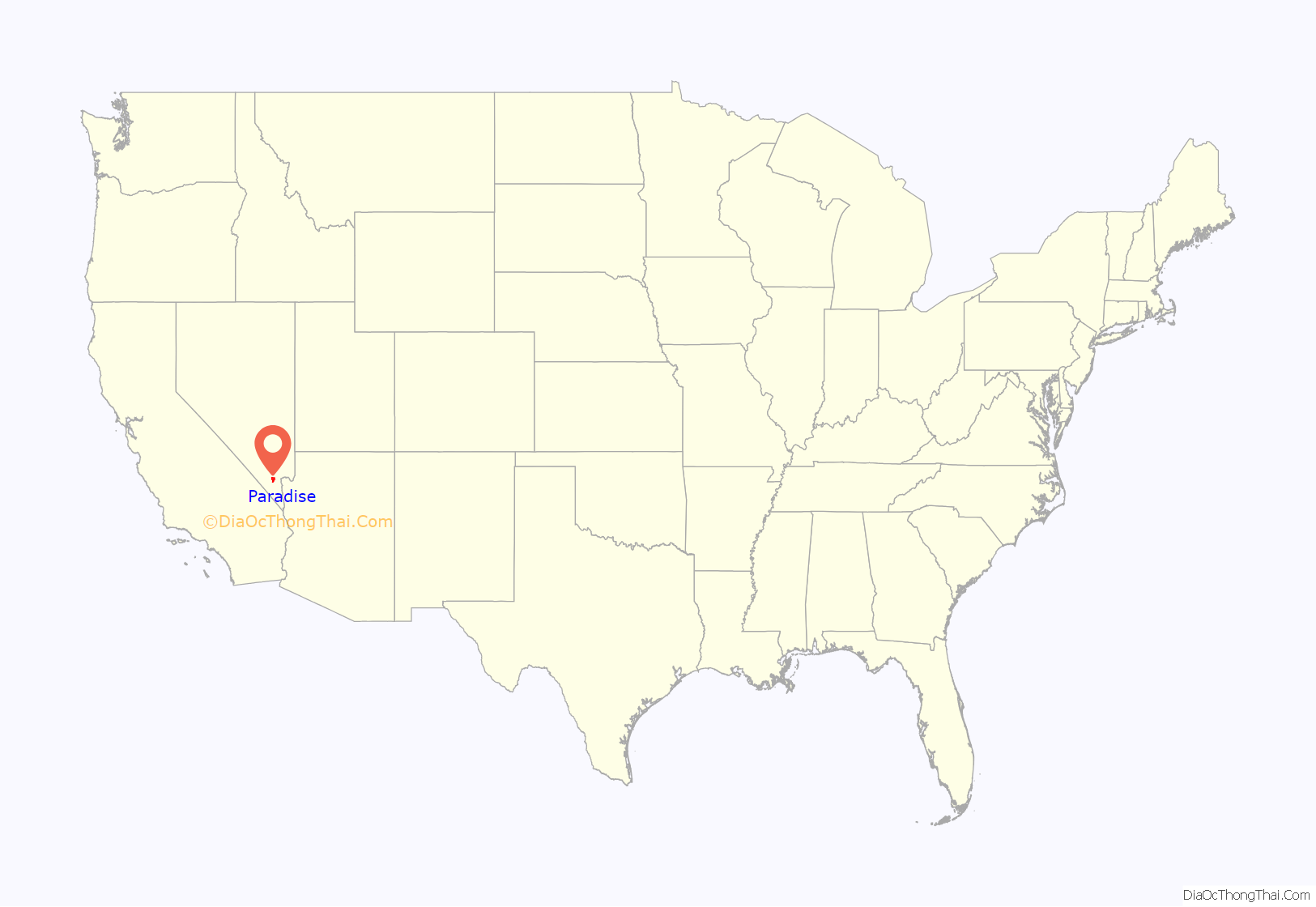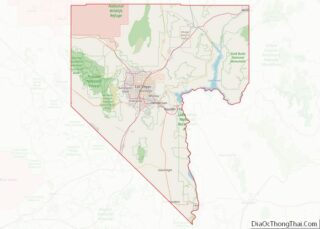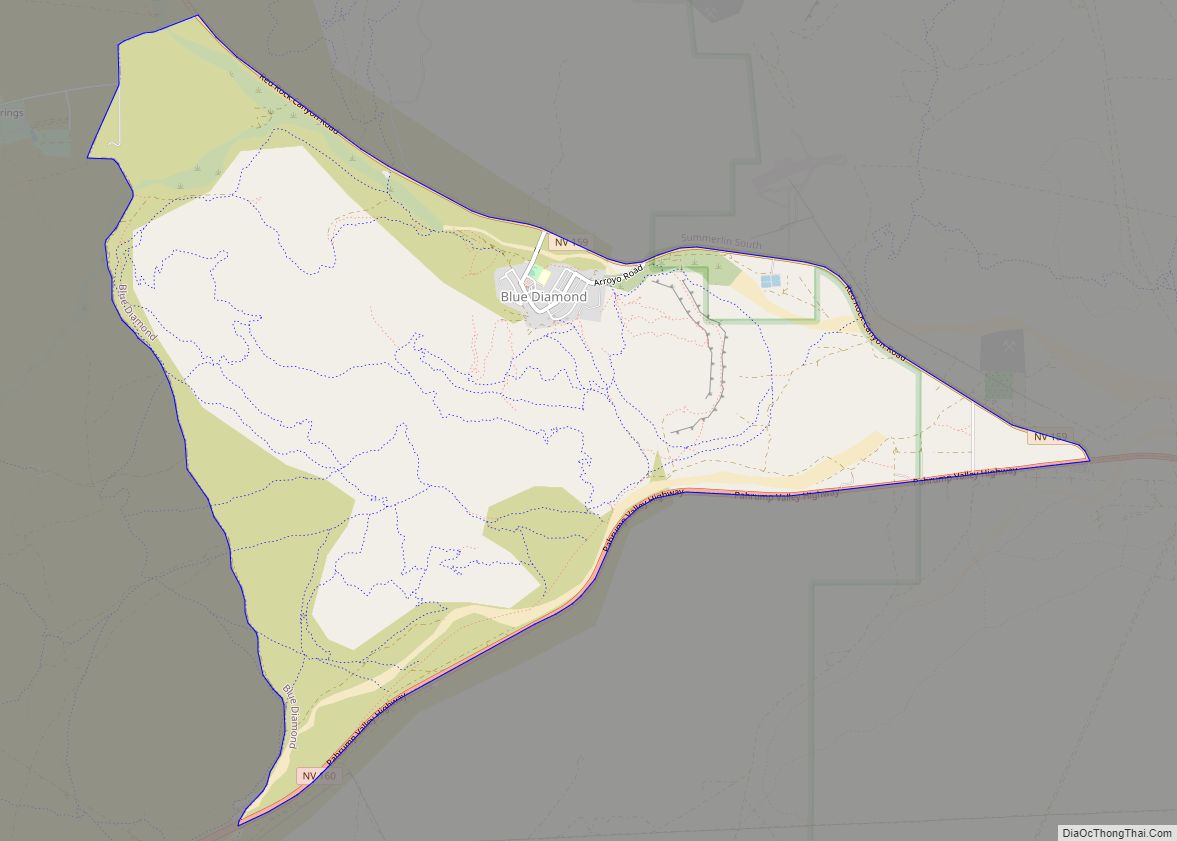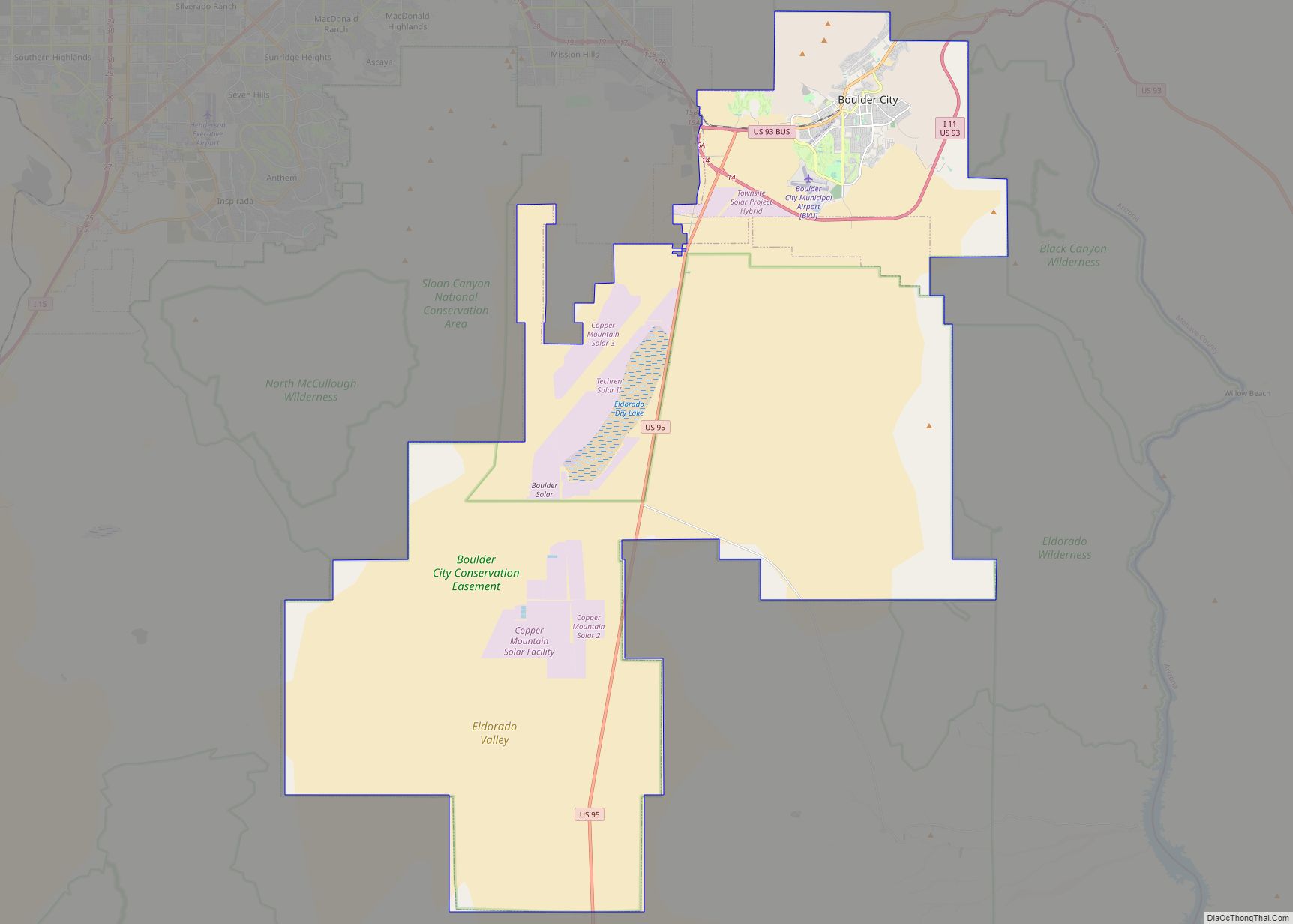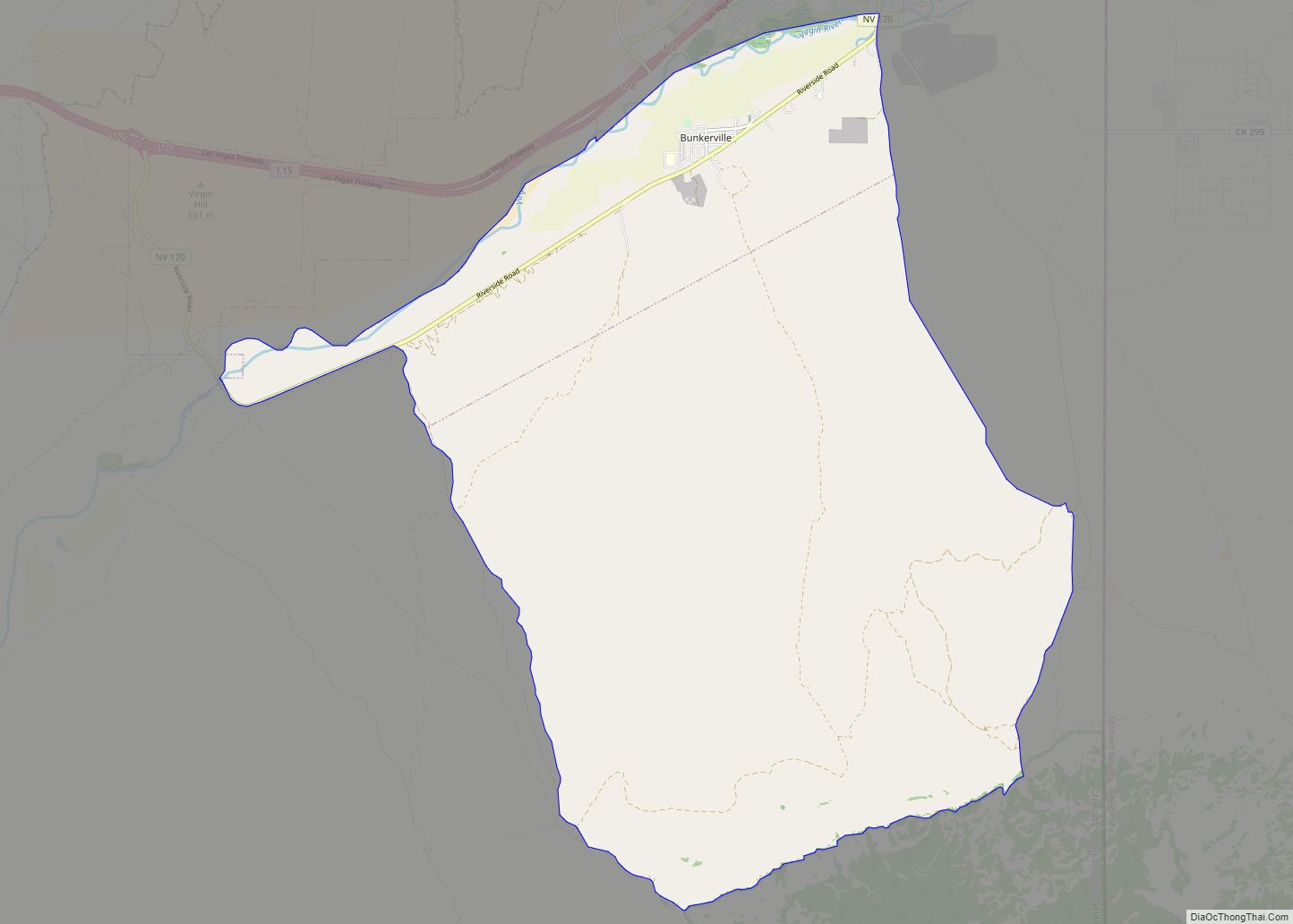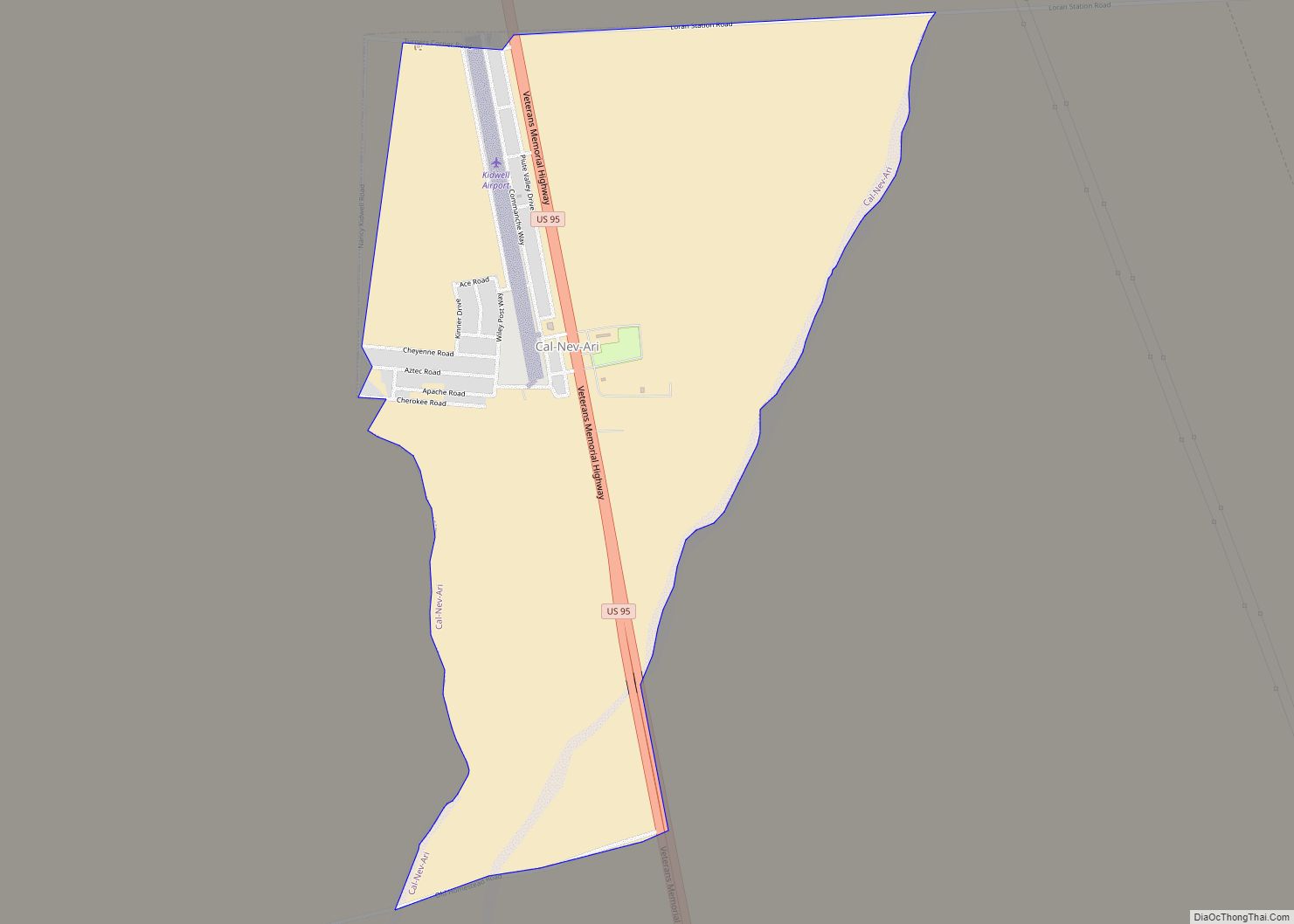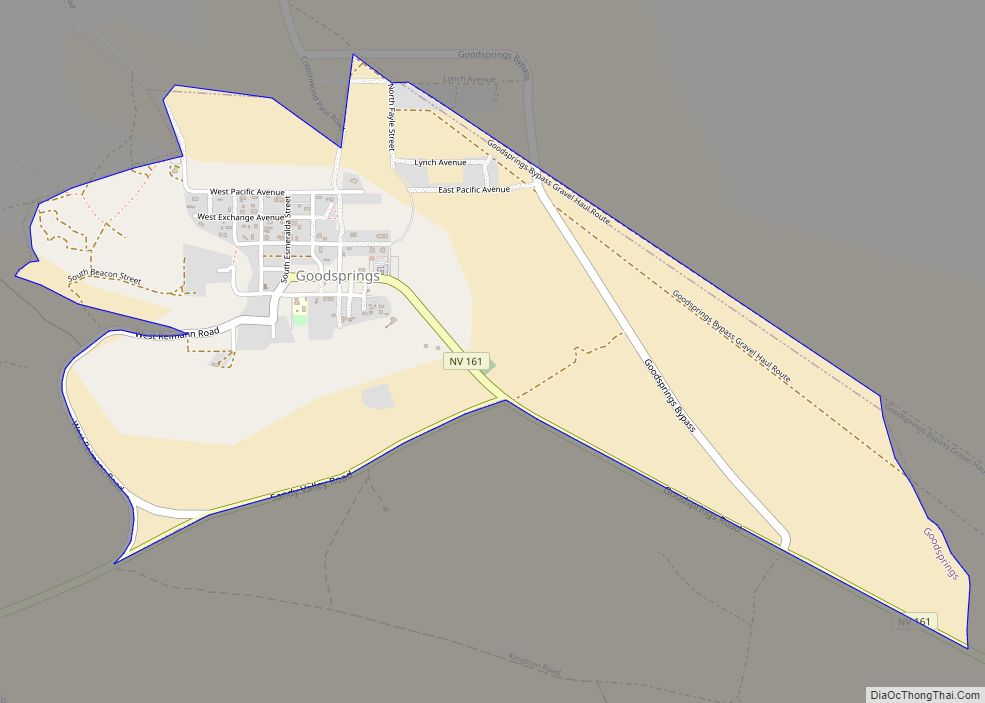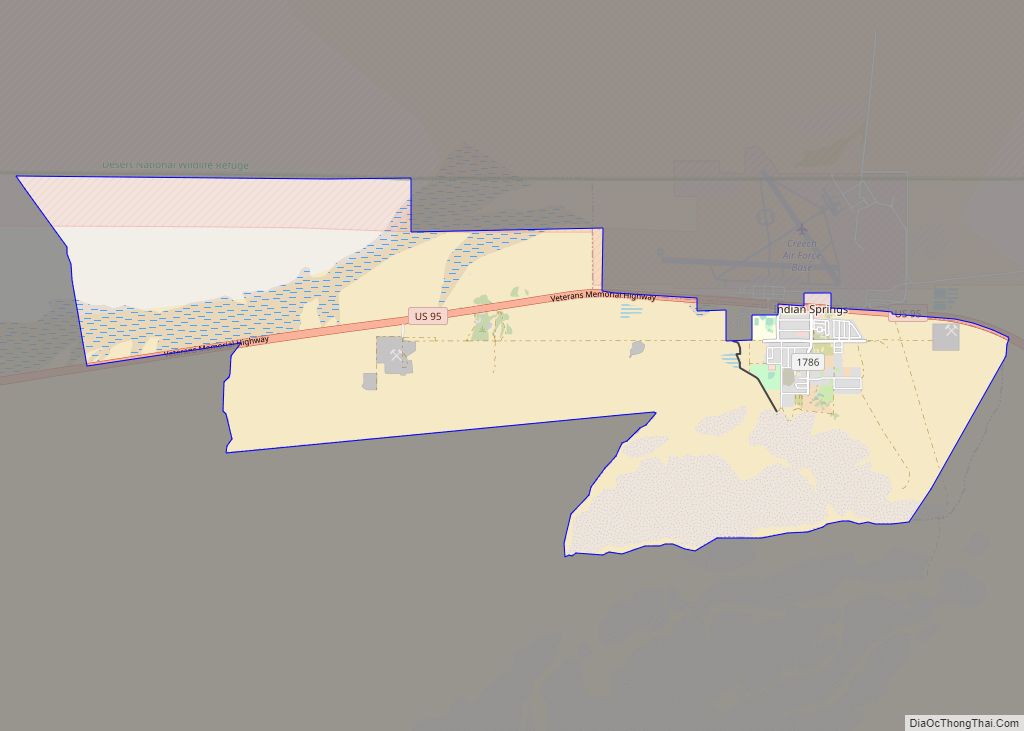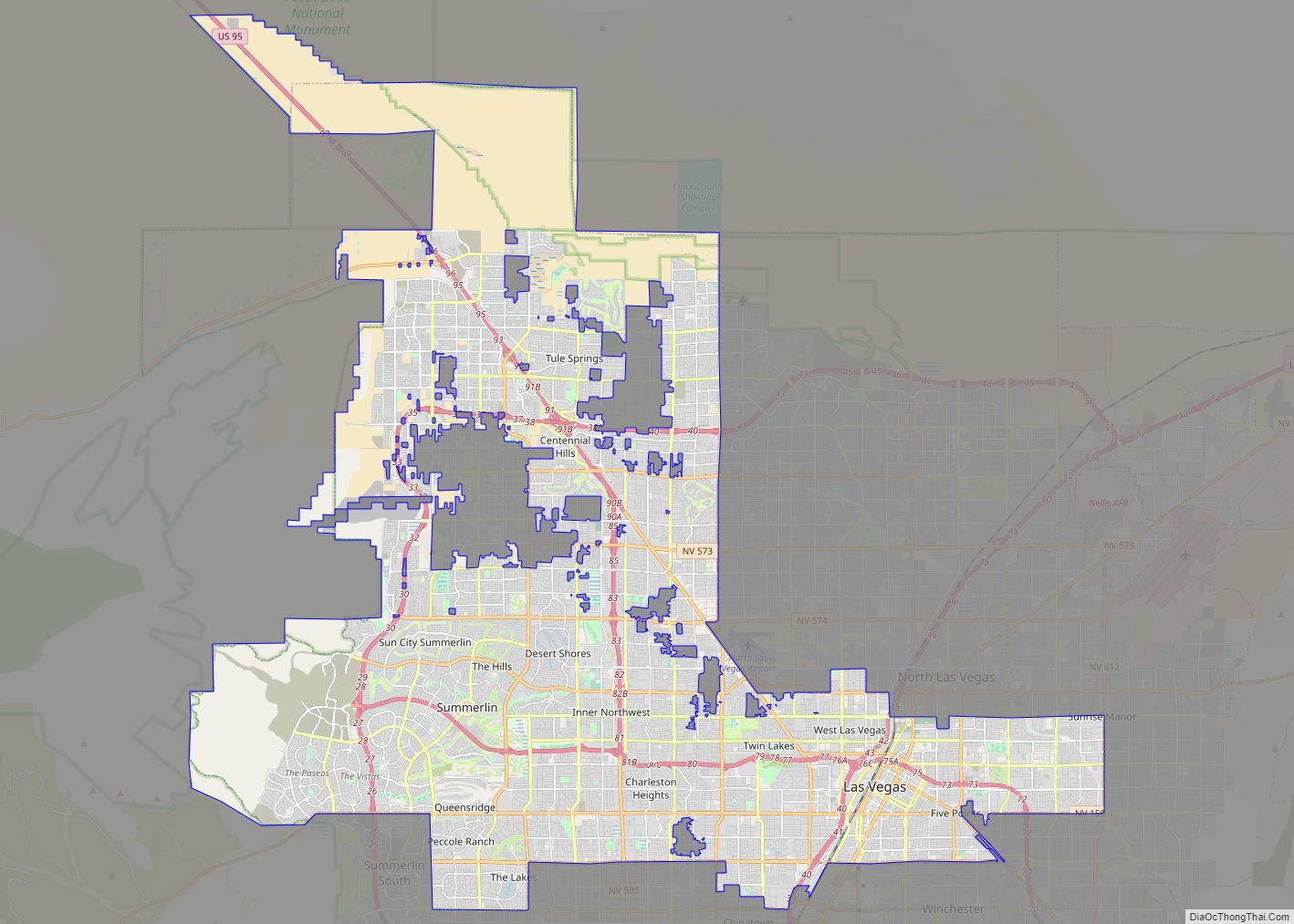Paradise is an unincorporated town and census-designated place (CDP) in Clark County, Nevada, United States, adjacent to the city of Las Vegas. It was formed on December 8, 1950. Its population was 191,238 at the 2020 census, making it the fifth-most-populous CDP in the United States; if it were an incorporated city, it would be the fifth-largest in Nevada. As an unincorporated town, it is governed by the Clark County Commission with input from the Paradise Town Advisory Board.
Paradise contains Harry Reid International Airport, the University of Nevada, Las Vegas (UNLV), most of the Las Vegas Strip, and most of the tourist attractions in the Las Vegas area (excluding downtown).
| Name: | Paradise CDP |
|---|---|
| LSAD Code: | 57 |
| LSAD Description: | CDP (suffix) |
| State: | Nevada |
| County: | Clark County |
| Founded: | December 8, 1950; 72 years ago (1950-12-08) |
| Elevation: | 2,057 ft (627 m) |
| Total Area: | 42.40 sq mi (109.83 km²) |
| Land Area: | 42.40 sq mi (109.83 km²) |
| Water Area: | 0.00 sq mi (0.00 km²) |
| Total Population: | 191,238 |
| Population Density: | 4,509.90/sq mi (1,741.28/km²) |
| Area code: | 702 and 725 |
| FIPS code: | 3254600 |
| GNISfeature ID: | 0845094 |
Online Interactive Map
Click on ![]() to view map in "full screen" mode.
to view map in "full screen" mode.
Paradise location map. Where is Paradise CDP?
History
The southern part of the Las Vegas Valley was referred to as Paradise Valley as early as 1910, owing to a high water table that made the land particularly fertile for farming. County commissioners established a Paradise school district in 1914.
In 1950, mayor Ernie Cragin of Las Vegas sought to annex the Las Vegas Strip, which was unincorporated territory, in order to expand the city’s tax base to fund his ambitious building agenda and pay down the city’s rising debt. A group of casino executives, led by Gus Greenbaum of the Flamingo, lobbied the county commissioners for town status, which would prevent the city from annexing the land without the commission’s approval. The commission voted to create the unincorporated town of Paradise on December 8, 1950. The town encompassed a strip one mile (1.6 km) wide and four miles (6.4 km) long, from the southern city limits of Las Vegas to just south of the Flamingo. The town board initially consisted of five casino managers, chaired by Greenbaum.
A month after its establishment, the town was expanded to include the residential areas of Paradise Valley, giving it a total area of 54 square miles (140 km). Months later, however, it was reported that county officials had determined that the town had not been properly established, because the petition for the town’s formation had an insufficient number of signatures and because it had violated a state law forbidding formation of a town spanning multiple school districts. On August 20, 1951, county commissioners accepted petitions to create two new towns covering the area of the putative town. Town “A” of Paradise included the areas that lay within a Las Vegas school district, extending from the city limits to a point one mile south, while Town “B” included the areas within the Paradise school district.
In 1953, Town A was renamed as Winchester, and Town B became known simply as Paradise.
In 1975, Nevada enacted a law that would have incorporated Paradise (along with Sunrise Manor and Winchester) into the City of Las Vegas. Before it could take effect, however, the bill was struck down as unconstitutional by the Nevada Supreme Court.
Paradise Road Map
Paradise city Satellite Map
Geography
According to the United States Census Bureau, the census-designated place (CDP) of Paradise (which may not coincide exactly with the town boundaries) has a total area of 46.7 square miles (121 km), all of it land.
The official town boundaries are bordered by Desert Inn Road to the north, Nellis Boulevard to the east, Sunset Road to the south and Decatur Boulevard to the west. There is a southern finger between Bermuda Road and Eastern Avenue south to Silverado Ranch Boulevard. South of Russell Road, the eastern border stair steps on a rough 45-degree angle toward the corner of Eastern and Robindale Road, and there is an additional finger surrounding Interstate 215 east to St. Rose Parkway.
See also
Map of Nevada State and its subdivision: Map of other states:- Alabama
- Alaska
- Arizona
- Arkansas
- California
- Colorado
- Connecticut
- Delaware
- District of Columbia
- Florida
- Georgia
- Hawaii
- Idaho
- Illinois
- Indiana
- Iowa
- Kansas
- Kentucky
- Louisiana
- Maine
- Maryland
- Massachusetts
- Michigan
- Minnesota
- Mississippi
- Missouri
- Montana
- Nebraska
- Nevada
- New Hampshire
- New Jersey
- New Mexico
- New York
- North Carolina
- North Dakota
- Ohio
- Oklahoma
- Oregon
- Pennsylvania
- Rhode Island
- South Carolina
- South Dakota
- Tennessee
- Texas
- Utah
- Vermont
- Virginia
- Washington
- West Virginia
- Wisconsin
- Wyoming
